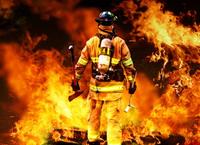-
New tool can be used as a universal Ebola drug target

University of Utah biochemists have reported a new drug discovery tool against the Ebola virus. According to a study published in this week’s online edition of Protein Science, they have produced a molecule, known as a peptide mimic, which displays a functionally critical region of the virus that is universally conserved in all known species of Ebola. This new tool can be used as a drug target in the discovery of anti-Ebola agents which are effective against all known strains and likely future strains. The same group of biochemists has previously developed highly potent and broadly acting D-peptide inhibitors of HIV entry, currently in preclinical studies, and is now adapting this approach to Ebola using the mimics developed in this study.
-
-
In worst-case scenario, sea level would rise 1.8 meters
The climate is getting warmer, the ice sheets are melting and sea levels are rising — but how much? The report of the UN’s Intergovernmental Panel on Climate Change (IPCC) in 2013 was based on the best available estimates of future sea levels, but the panel was not able to come up with an upper limit for sea level rise within this century. Now researchers have calculated the risk for a worst-case scenario. The results indicate that at worst, the sea level would rise a maximum of 1.8 meters – but the much more likely rise in sea level would be around 80 cm.
-
-
More research needed to address synthetic biology security concerns
Synthetic biology involves the design of new biological components, devices, or systems that do not exist in nature, or the redesign of existing natural biological systems. Synthetic biology aims to make biological systems work more efficiently or to design biological tools for specific applications — such as developing more effective antibiotics. A new paper examines security risks and policy questions related to the growing field of synthetic biology. While the author does not think the field is ripe for exploitation by terrorists, it does highlight significant gaps in our understanding of the nuts and bolts of lab work in synthetic biology that can contribute to security risks.
-
-
Building a better lie detector
The Intelligence Advanced Research Projects Activity (IARPA), within the Office of the Director of National Intelligence (ODNI), announced the other day the winner of its first public challenge contest, Investigating Novel Statistical Techniques to Identify Neurophysiological Correlates of Trustworthiness (INSTINCT). The winning solution, JEDI MIND — Joint Estimation of Deception Intent via Multisource Integration of Neuropsychological Discriminators — uses a combination of innovative statistical techniques to improve predictions approximately 15 percent over the baseline analysis.
-
-
Reliance on BP, feeble regulations make U.S. partially culpable in Deepwater Horizon oil spill
A recent ruling by a federal judge that BP was “grossly negligent” in the 2010 Deepwater Horizon oil rig spill in the Gulf of Mexico placed the majority of blame on the multinational oil and gas company. Although not on trial in this case, the federal government was also culpable in the largest oil spill in U.S. history, according to a new paper. Based on reports from the National Commission on the BP Deepwater Horizon Oil Spill and Offshore Drilling, the Chief Council’s Report and other government documents, the report’s authors determined that the government’s reliance on market-based accountability mechanisms and its failure to implement a regulatory process based on a mutually agreed upon set of robust standards and voluntary information disclosure led to the largest oil spill in U.S. history.
-
-
Snake-inspired robots show how sidewinders conquer sandy slopes
The amazing ability of sidewinder snakes to quickly climb sandy slopes was once something biologists only vaguely understood and roboticists only dreamed of replicating. By studying the snakes in a unique bed of inclined sand and using a snake-like robot to test ideas spawned by observing the real animals, both biologists and roboticists have now gained long-sought insights.
-
-
As sea level rises, coastal communities brace for more frequent, destructive tidal flooding
Today, many coastal communities are seeing more frequent flooding during high tides. As sea level rises higher over the next fifteen to thirty years, tidal flooding is expected to occur more often, cause more disruption, and even render some areas unusable — all within the time frame of a typical home mortgage. An analysis of fifty-two tide gauges in communities stretching from Portland, Maine to Freeport, Texas shows that most of these communities will experience a steep increase in the number and severity of tidal flooding events over the coming decades, with significant implications for property, infrastructure, and daily life in affected areas. The report warns that given the substantial and nearly ubiquitous rise in the frequency of floods at these fifty-two locations, many other communities along the East and Gulf Coasts will need to brace for similar changes.
-
-
Fusion reactor concept could be cheaper than coal
Fusion energy almost sounds too good to be true — zero greenhouse gas emissions, no long-lived radioactive waste, a nearly unlimited fuel supply. Perhaps the biggest roadblock to adopting fusion energy is that the economics have not penciled out. Fusion power designs aren’t cheap enough to outperform systems that use fossil fuels such as coal and natural gas. University of Washington engineers hope to change that. They have designed a concept for a fusion reactor that, when scaled up to the size of a large electrical power plant, would rival costs for a new coal-fired plant with similar electrical output.
-
-
U.S. Navy unveils autonomous swarmboats to “swarm” hostile vessels
As autonomy and unmanned systems grow in importance for naval operations, officials at the Office of Naval Research (ONR) announced the other day a technological breakthrough that will allow any unmanned surface vehicle (USV) to not only protect Navy ships, but also, for the first time, autonomously “swarm” offensively on hostile vessels. The first-of-its-kind technology — successfully demonstrated over two weeks in August on the James River in Virginia — allows unmanned Navy vessels to overwhelm an adversary.
-
-
Mopping up toxic fire-fighting chemicals

Australian scientists have come up with the solution to a world-wide pollution problem — how to mop up the toxic residues left after the use of special foams to fight fires. The technology uses a modified clay to soak up potential cancer-causing substances in the foam used by fire fighters, defense facilities, and airports worldwide to suppress fires.
-
-
Is it fair to blame the West for trouble in the Middle East?
For at least a decade, attempts to understand why some young Muslims living in Western countries turn to violence in the name of religion have raised questions about Western foreign policy in the Middle East. Many blame the United States’ foreign policy. The Islamic State uses anger and grievance against Western intervention as a powerful recruiting tool. There is some truth to the argument that anger at foreign policy and the West’s engagement with the Arab world is at the heart of Muslim anger, as well as a driver of radicalization among Muslim youth, but the current state of affairs in the Middle East is not simply an outcome of Western intervention and the U.S.-led invasion of Iraq in 2003. Western foreign policy in the region has no doubt influenced the current situation, but the conditions for the spread of militant Islamism have come from attempts to deal with the crisis within: a crisis that is as much political in nature as it is religious.
-
-
Research powerhouses team up to develop climate models for energy applications
Eight national laboratories, four academic institutions, and one private-sector company are partnering in the Climate Modeling for Energy, or ACME, project, designed to accelerate the development and application of fully coupled, state-of-the-science Earth system models for scientific and energy applications. The project will focus initially on three climate-change science drivers and corresponding questions to be answered during the project’s initial phase.
-
-
California communities running out of water
Since January, a number of California communities in the Central Valley have been experiencing such extreme drought that they have been placed on a “critical water systems” list — a ranking indicating that the areas could run completely dry within sixty days. Many of these areas have had wells dried up since July.
-
-
New cyber initiative to put Israel’s Beer-Sheva region on the world’s cyber map
Ben-Gurion University of the Negev is a central component of the new CyberSpark initiative, an ecosystem with all the components which will allow it to attain a position of global leadership in the cyber field. The CyberSpark initiative is the only complex of its type in the world – a government-academic-industry partnership which includes Fortune 500 companies and cyber-incubators, academic researchers and educational facilities, as well as national government and security agencies. The CyberSpark Industry Initiative will serve as a coordinating body for joint cyber industry activities with government agencies, the Israel Defense Force (IDF), and academia.
-
-
Better planetary vital signs should replace 2° C warming goal as targets for climate action
As climate instability increases across the planet, limiting global surface air temperature increase above pre-industrial levels to an average of 2° C (3.6° F) has become a popular metric for success in the public eye. Two researchers argue, however, that the goal is a misleading one. Though it is a relatively tangible concept to appreciate, the standard does not correlate well to prescribed government actions such as limiting fossil fuel use or establishing carbon markets. “Scientifically, there are better ways to measure the stress that humans are placing on the climate system than the growth of average global surface temperature — which has stalled since 1998 and is poorly coupled to entities that governments and companies can control directly,” the researchers say.
-
More headlines
The long view
New Technology is Keeping the Skies Safe
DHS S&T Baggage, Cargo, and People Screening (BCP) Program develops state-of-the-art screening solutions to help secure airspace, communities, and borders
Factories First: Winning the Drone War Before It Starts
Wars are won by factories before they are won on the battlefield,Martin C. Feldmann writes, noting that the United States lacks the manufacturing depth for the coming drone age. Rectifying this situation “will take far more than procurement tweaks,” Feldmann writes. “It demands a national-level, wartime-scale industrial mobilization.”
How Artificial General Intelligence Could Affect the Rise and Fall of Nations
Visions for potential AGI futures: A new report from RAND aims to stimulate thinking among policymakers about possible impacts of the development of artificial general intelligence (AGI) on geopolitics and the world order.
Smaller Nuclear Reactors Spark Renewed Interest in a Once-Shunned Energy Source
In the past two years, half the states have taken action to promote nuclear power, from creating nuclear task forces to integrating nuclear into long-term energy plans.
Keeping the Lights on with Nuclear Waste: Radiochemistry Transforms Nuclear Waste into Strategic Materials
How UNLV radiochemistry is pioneering the future of energy in the Southwest by salvaging strategic materials from nuclear dumps –and making it safe.
Model Predicts Long-Term Effects of Nuclear Waste on Underground Disposal Systems
The simulations matched results from an underground lab experiment in Switzerland, suggesting modeling could be used to validate the safety of nuclear disposal sites.
